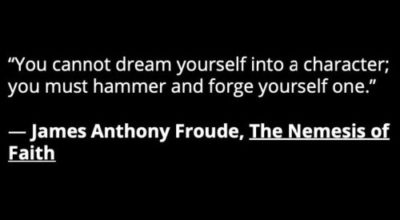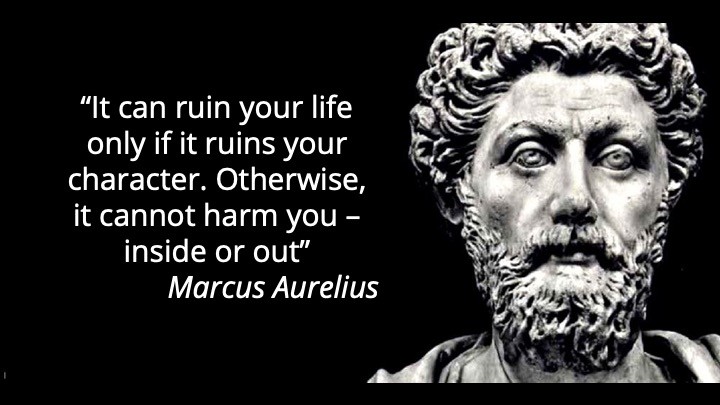
In the first post of this series, I shared an anecdote of how I once heard an executive in the US say “Never let a good crisis go to waste”. On the second post, we briefly explored some ideas about how the crisis and how we respond to it might have a long-lasting effect, with downstream effects impacting our character. In this post, I would like to share some thoughts on how a practice of empathy and gratitude can be a character-building ‘workout’.
As the pandemic continues to wreak havoc in our healthcare and economic systems at the macro-level, the downstream impacts it has on our lives are extremely varied. However, it is difficult to keep in mind the different impact ‘modalities’ it has. The conversations, articles, podcasts, news, etc. from the last weeks have gotten me thinking about the different realities people are experiencing – and it’s prompted me both to empathize more and be grateful for my own situation (still working on it!). We can look at some of these different realities through a large number of different ‘lenses’ or perspectives to help with the mental and emotional exercise. Let’s start with the lens of work situation by looking at a very very high level way of grouping different types of work circumstances many of us are facing right now.
Knowledge / remote workers
This is a segment of the population in many countries that has the great fortune of being able to continue their work from home. Some were already doing it before the crisis, but many people in several countries are now full-time remote workers, for the first time. Those who had not worked remotely before might be struggling with the basics: i.e. setting up a proper physical space, improving their setup to have proper internet connectivity (have you been on a videoconference recently where someone is struggling to get good wifi signal inside their house?), proper headset, etc. For some others, the challange might be not only the setup, but also the learning curve to work remotely: I’ve heard from many of our clients how they have struggled to teach their people how to work remotely overnight, with some even paying online courses to teach their workforce how to operate in this environment. There are some others who now struggle to manage a workforce which became a distributed one overnight.
On top of this we can layer other type of complications – a Wall Street firm HR Director recently shared with me a situation they are facing with their younger workers. Many of them might find themselves working out of a densely populated urban area in which they live with roommates in a small space (think NY or San Francisco, for example). In their small apartments, they might not even have a suitable space to camp out with their laptop and take a call, or said space is not enough to have all roommates trying to do it simultaneously. Others might find themselves locked in their house with their kids running around with no school – trying now to double not only as remote workers but as homeschool teachers. I have heard hundreds of variants of this type of situation, but even though it is undeniably disruptive and stressful, it is a great situation to be in, especially if we consider others.
Still with a job, risking it
There are many others who are fortunate enough to still have a job, but it can’t be performed remotely, and it needs to be performed. Thousands of healthcare workers (facing greater risks than anyone), bank branch employees, supermarket employees, essential service provider workers (water, electricity, internet) among many others. They not only have to deal with potentially having their kids at home, but to continue performing their job – and essentially doing it knowing that everyday that passes they risk contagion, with all the uncertainty that comes with it. “Will I get mild symptoms or end in the hospital? Can I pass it on to my kids and or older relatives living with us?” are thoughts we all might have, but I can only imagine the way they are amplified for those having to leave home everyday to go to work.
Now unemployed – and unprotected
Then we have millions who are now (or about to be) unemployed… and depending on which country they are in, and their situation, this can be a downward spiral with potential ramifications worse than the virus’ most common course. A startup CEO in Mexico recently told me “in my country, poverty will kill more people than the virus”. There are billions of people who live either under the poverty line, or who barely surpass it yet require income on a daily or weekly basis to survive. An interruption in income of a few days can mean they can’t pay rent or other essential expenses. Losing employment can mean they lose their medical insurance, whether private or public…
Other lenses
Sickness and death is yet another lens through which we can try to empathize. Both can touch us all – whether we live in the 1% strata or live in poverty, employed or unemployed, no one is immune to this. We’ve heard about infected (and recently dead) royals and celebrities all the way to the mass graves for the less fortunate ones.
There are additional, countless lenses through which we can try to empathize with others during these times: age (i.e. older people seem to have higher mortality rates), having access or not to testing and healthcare if needed, being able to take care of oneself even for basic chores like shopping, the political situation of where you live (those under totalitarian regimes might be on slippery slope to lose even more freedom), etc.
Whatever the lenses we choose to practice empathy, they can be helpful to get some understanding of what others are living during this crisis. If you are reading this, there is a very reasonable chance you are in one of the more fortunate situations: hopefully you have the financial means to weather this storm out, or you still have a job you can do remotely. If this is the case, remember, even if you are experiencing hardships, count your blessings: there are probably millions who would see your current situation as an answer to their prayers, if they could switch places with you today. Realizing that can help put things in perspective – and it’s one of many ways in which we can individually do our work to avoid letting this crisis go to waste.
First published in LinkedIn



